This article was co-authored by Chris M. Matsko, MD. Dr. Chris M. Matsko is a retired physician based in Pittsburgh, Pennsylvania. With over 25 years of medical research experience, Dr. Matsko was awarded the Pittsburgh Cornell University Leadership Award for Excellence. He holds a BS in Nutritional Science from Cornell University and an MD from the Temple University School of Medicine in 2007. Dr. Matsko earned a Research Writing Certification from the American Medical Writers Association (AMWA) in 2016 and a Medical Writing & Editing Certification from the University of Chicago in 2017.
There are 16 references cited in this article, which can be found at the bottom of the page.
wikiHow marks an article as reader-approved once it receives enough positive feedback. This article received 15 testimonials and 80% of readers who voted found it helpful, earning it our reader-approved status.
This article has been viewed 759,770 times.
Nasal congestion is caused when something irritates and inflames the nasal tissues, including infections (like colds, the flu or sinusitis), allergies and other irritants (such as smoke), or chronic conditions like nonallergic rhinitis.[1] According to guidelines issued by the World Health Organization, the best approach to treating sinus congestion is to use a combination of different treatment strategies, medical and non-medical, to relieve your symptoms.[2]
Steps
Using Home Remedies
-
1Use steam. Fill a one-quart pot with water. Boil the water on the stove for a minute or two or until it is steaming vigorously. Then remove the pot from the heat and place on a heat resistant mat on a table. Drape a large, clean cotton towel over your head and then place your head over the steaming pot. Close your eyes and keep your face at least 12 inches away from the water so that you don't burn yourself. Breathe in through your nose and out through your mouth for five counts. Then reduce the inhales and exhales to two counts. Do this for 10 minutes or for as long as the water is still steaming. Try to blow your nose during and after the treatment.[3]
- Keep any children away from the pot while it is boiling and while it is steaming. Try to do a steaming treatment when there aren't any children around.
- You can use this technique frequently, up to every two hours. You can do a steam every two hours or as often as you like. Try placing your face over the steam coming from a hot tea or bowl of soup when you're at work or out and about.
- You can also add herbs and essential oils (one to two drops) to your steaming water. Spearmint or peppermint, thyme, sage, oregano, lavender, tea tree oil, and black lavender oil have either antibacterial, antifungal or antiseptic properties.[4]
-
2Take hot showers. Taking a long, hot shower works very similarly to the steam treatments described above. The hot water from the shower creates warm, moist air that is useful in clearing out blocked nasal passages and relieving sinus pressure. Try blowing your nose naturally. The heat and steam will help moisten and liquify the secretions in the sinuses to better facilitate their evacuation.[5]
- You also achieve a similar beneficial effect by placing a warm compress on your face to help open up your nasal passages and relieve any pressure you might be feeling in your sinuses. Warm a moist washcloth in the microwave for two to three minutes. Always take care not to burn yourself.[6]
Advertisement -
3Irrigate your nose. Mix eight ounces of warm water with 1/2 teaspoon of salt. Using a bulb syringe purchased at the drugstore, irrigate your nostrils with this homemade saline rinse to help loosen and liquify your nasal secretions and relieve congestion. Try doing two sprays in each nostril.[7]
- Use water that is distilled, sterile, or already boiled and cooled. Always rinse the instrument after each use and let air dry before next use.[8]
-
4Try a neti pot. A neti pot is miniature tea pot-shaped device that has become popular and gained support from the medical community as a way of cleansing your sinus passages. The neti pot works by flooding warm water through one nostril and out the other. You simply fill the “teapot” with warm water and tilt your head to allow the water to pour into your right nostril and drain out the left. Then, do the other side.[9]
- It is important that you use water that is distilled, sterile, or already boiled and cooled. Always rinse the neti pot after each use.
- There have been some reports of rare amoebic infections via the neti pot. This can be avoided by using water that meets the above criteria.[10]
-
5Use a humidifier. To help improve the health of your sinuses, place a humidifier in your bedroom while you sleep. A humidifier produces steam and moist air, which will help clear out the nasal passages.[11]
- When your nasal passages are blocked, you need to focus on keeping your nasal passages and sinuses moist. Although many people think that if you have have a runny nose, that dry air is the trick, dry air only further irritates the membranes in your nasal passage.
- Humidifiers are especially good during the wintertime because the air in most homes is very dry due to central heating.
- Even placing a hot water bottle near the ear may have a similar effect and help to draw out ear fluid.
-
6Drink fluids. Make sure that you drink lots of water (at least 8 full glasses a day) because this will thin out your mucus and can help prevent sinuses blockages, and thereby ease pressure.[12]
- Thinned out mucus is much more likely to drain. Whenever you feel the beginnings of sinus pressure, make a concerted effort to stay hydrated.[13]
- Warm tea can also be useful because it has a similar effect to steam, and the warmth will allow the nasal secretions to flow out.
-
7Eat something spicy. Hot salsa, peppers, hot wings, horseradish, and other spicy foods can get your nasal secretions flowing and thereby help to relieve the pressure in your sinuses. The nose is best blown when the secretions are moist and fluid. That is why remedies that generate this are effective.[14]
- For sushi lovers, try wasabi. The spicy topping will temporarily relieve sinus pressure and help clear your sinuses.
-
8Try acupressure or manual massage. Apply gentle pressure using your index and middle fingers, rotating in a circular motion over the forehead (frontal sinus) and the bridge of your nose and behind your eyes (orbital sinus) as well as under the eyes (maxillary sinus). Do this for several minutes and then blow your nose right after. Although some studies support the use of acupressure for sinus congestion, more research needs to be done to determine whether it is effective.[15]
- You can also apply an oil, such as rosemary or peppermint, as you massage that may open up your sinus passages. Just don't let the oil get into your eyes. Consult with your doctor first before trying aromatherapy.[16]
-
9Exercise. Exercise is a natural decongestant. Getting your heart rate up just enough to break sweat can help clear your nasal secretions. If you can do some aerobic exercise, such as running or cycling for even 15 minutes, you may experience some relief. However, if you have a fever, you should avoid exercise.[17]
- You can even try moderate exercise, such as going for a brisk walk.
-
10Keep your head elevated. When you go to sleep at night, place a couple of pillows beneath your head so that it is elevated. This will make breathing easier and keep the sinus pressure from building up.[18]
Taking Medications
-
1Use a nasal steroid spray. Intranasal steroids, such as fluticasone (Flonase) and triamcinolone (Nasacort), which is now available over-the-counter, work by reducing inflammation in the nose. Nasal steroid spray has the benefit of having no major side effects like those caused by many oral decongestants and antihistamines, such as drowsiness and dry mouth. Note, however, that it takes a few days for the steroid to build up to its full effect; this means that you will not experience immediate relief.[19]
- If you're using Flonase, the typical dosage is one spray per nostril twice daily.
- There are also other nasal steroids available with a prescription, such as mometasone Furoate (Nasonex).
- Potential side effects include indigestion, nausea, and headaches.
- New guidelines have suggested that intranasal steroids should be the first line of treatment for sinus congestion.[20]
-
2Take antihistamines. Some people find antihistamines useful, particularly in longer-lasting occurrences of sinus infections, because they can ease nasal congestion. Oral antihistamines include diphenhydramine (Benadryl), cetirizine (Zyrtec) and Loratadine (Claritin). Note, however, that some older antihistamines can have serious side effects for the sinuses, including the drying up of the mucous membranes of the nasal tissue and thickening the secretions, and can also cause drowsiness.[21] [22]
- Take 25 milligrams of Benadryl every eight hours as needed for congestion. This drug may prove difficult to tolerate due to its side effects of drowsiness and “fogginess."
- Take 10 mg of Zyrtec once daily. Children older than six years of age may take this as well, in doses of 5-10 mg per day, depending on weight. Consult the instructions. This medication may cause some drowsiness.
- Take 10 mg of Claritin once daily. Second generation antihistamines such as this one have a much improved side effect profile and are less likely to cause drowsiness.[23]
- You could also try a prescription antihistamine nasal spray such as azelastine (Astelin, Astepro) or olopatadine hydrochloride (Patanase).
-
3Use decongestants. Using an over-the-counter decongestant or medication can help relieve pressure in your sinuses by unblocking the nasal passages. You can get them in the form of nasal sprays or as oral medication and they can be purchased at most pharmacies. Consult your doctor before using any nasal decongestant sprays or oral decongestants and always be sure to follow any instructions on the label.[24] [25]
- Nasal decongestant sprays should not be used for more than 3 days at a time. Longer term use has been linked to "rebound" swelling of the nasal passages. Oral decongestants, such as Sudafed or Bronkaid pills, however, can be used for up to two weeks without supervision by a physician.
- While the "rebound" swelling is less common with oral decongestants, some people experience palpitations or a rise in blood pressure.
- Avoid nasal sprays containing zinc. These have been linked to permanent loss of the sense of smell (though this is rare).
Expert Q&A
-
QuestionIs it possible to have pain in the face that has nothing to do with dental problems?
 Chris M. Matsko, MDDr. Chris M. Matsko is a retired physician based in Pittsburgh, Pennsylvania. With over 25 years of medical research experience, Dr. Matsko was awarded the Pittsburgh Cornell University Leadership Award for Excellence. He holds a BS in Nutritional Science from Cornell University and an MD from the Temple University School of Medicine in 2007. Dr. Matsko earned a Research Writing Certification from the American Medical Writers Association (AMWA) in 2016 and a Medical Writing & Editing Certification from the University of Chicago in 2017.
Chris M. Matsko, MDDr. Chris M. Matsko is a retired physician based in Pittsburgh, Pennsylvania. With over 25 years of medical research experience, Dr. Matsko was awarded the Pittsburgh Cornell University Leadership Award for Excellence. He holds a BS in Nutritional Science from Cornell University and an MD from the Temple University School of Medicine in 2007. Dr. Matsko earned a Research Writing Certification from the American Medical Writers Association (AMWA) in 2016 and a Medical Writing & Editing Certification from the University of Chicago in 2017.
Family Medicine Physician Yes, sometimes you can have jaw pain from a sinus symptoms. This is due to referred pain to the jaw.
Yes, sometimes you can have jaw pain from a sinus symptoms. This is due to referred pain to the jaw. -
QuestionHow do I get rid of sinus congestion?
 Chris M. Matsko, MDDr. Chris M. Matsko is a retired physician based in Pittsburgh, Pennsylvania. With over 25 years of medical research experience, Dr. Matsko was awarded the Pittsburgh Cornell University Leadership Award for Excellence. He holds a BS in Nutritional Science from Cornell University and an MD from the Temple University School of Medicine in 2007. Dr. Matsko earned a Research Writing Certification from the American Medical Writers Association (AMWA) in 2016 and a Medical Writing & Editing Certification from the University of Chicago in 2017.
Chris M. Matsko, MDDr. Chris M. Matsko is a retired physician based in Pittsburgh, Pennsylvania. With over 25 years of medical research experience, Dr. Matsko was awarded the Pittsburgh Cornell University Leadership Award for Excellence. He holds a BS in Nutritional Science from Cornell University and an MD from the Temple University School of Medicine in 2007. Dr. Matsko earned a Research Writing Certification from the American Medical Writers Association (AMWA) in 2016 and a Medical Writing & Editing Certification from the University of Chicago in 2017.
Family Medicine Physician First you will want to try some home therapies, like a Neti pot. f this does not work then I would recommend seeing a doctor and getting a prescription for a nasal steroid, antihistamines, or decongestants.
First you will want to try some home therapies, like a Neti pot. f this does not work then I would recommend seeing a doctor and getting a prescription for a nasal steroid, antihistamines, or decongestants.
Warnings
- If the sinus congestion doesn't go away within 10 days after using the above treatments, see your doctor. It could be a symptom of an underlying medical condition, such as allergies.[26]⧼thumbs_response⧽
- See your doctor if your nasal secretions change in color or texture or if you observe a low-grade fever or headache. This may indicate a sinus infection that requires antibiotics to treat the infection.[27]⧼thumbs_response⧽
References
- ↑ https://www.mayoclinic.org/symptoms/nasal-congestion/basics/causes/sym-20050644
- ↑ Denise Sur MD, Stephanie Scandale MD, Treatment of Allergic Rhinitis, American Family Physician, 2010, June 81 ( 12) 1440-1446
- ↑ https://medlineplus.gov/ency/article/003049.htm
- ↑ https://www.ncbi.nlm.nih.gov/pmc/articles/PMC4808543/
- ↑ https://www.webmd.com/allergies/sinus-congestion
- ↑ http://www.webmd.com/allergies/sinus-pain-pressure-11/sinus-congestion
- ↑ http://www.mayoclinic.org/diseases-conditions/nonallergic-rhinitis/basics/treatment/con-20026910
- ↑ https://www.mayoclinic.org/diseases-conditions/common-cold/expert-answers/neti-pot/faq-20058305
- ↑ https://www.webmd.com/allergies/sinus-congestion
- ↑ http://www.cdc.gov/parasites/naegleria/infection-sources.html#sixteen
- ↑ https://medlineplus.gov/ency/article/003049.htm
- ↑ https://www.webmd.com/allergies/sinus-congestion
- ↑ https://medlineplus.gov/ency/article/003049.htm
- ↑ https://my.clevelandclinic.org/health/symptoms/17660-runny-nose
- ↑ https://my.clevelandclinic.org/health/diseases/17701-sinusitis
- ↑ https://www.mayoclinic.org/healthy-lifestyle/consumer-health/expert-answers/aromatherapy/faq-20058566
- ↑ https://www.mayoclinic.org/healthy-lifestyle/fitness/expert-answers/exercise/faq-20058494
- ↑ http://www.health.harvard.edu/staying-healthy/what-to-do-about-sinusitis
- ↑ http://www.mayoclinic.org/diseases-conditions/nonallergic-rhinitis/basics/treatment/con-20026910
- ↑ http://www.medscape.com/viewarticle/839130
- ↑ http://www.mayoclinic.org/diseases-conditions/nonallergic-rhinitis/basics/treatment/con-20026910
- ↑ http://www.medscape.com/viewarticle/839130
- ↑ http://www.medscape.com/viewarticle/839130
- ↑ http://www.mayoclinic.org/diseases-conditions/nonallergic-rhinitis/basics/treatment/con-20026910
- ↑ http://www.health.harvard.edu/staying-healthy/what-to-do-about-sinusitis
- ↑ http://www.mayoclinic.org/symptoms/nasal-congestion/basics/when-to-see-doctor/sym-20050644
- ↑ http://www.mayoclinic.org/symptoms/nasal-congestion/basics/when-to-see-doctor/sym-20050644
About This Article
To get rid of sinus congestion, boil a pot of water on the stove, then remove the pot from the heat and place it on a heat-resistant mat on a table. If you like, you can add herbs or 1-2 drops of peppermint or lavender oil Drape a large, clean towel over your head and place your head over the steaming pot about 12 inches from the water. Breath in through your nose and out through your mouth, and stay there for about 10 minutes or as long as the water continues to steam. Try to blow your nose during and after the treatment to relieve your sinus pressure. Keep reading for tips from our medical reviewer, like how to irrigate your nose with a neti pot!
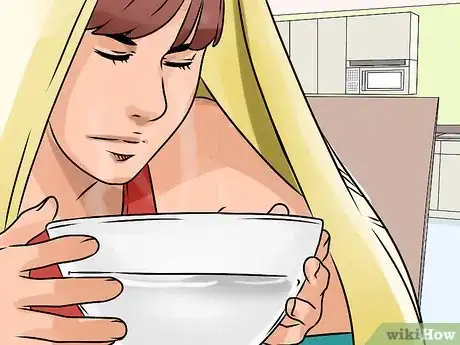
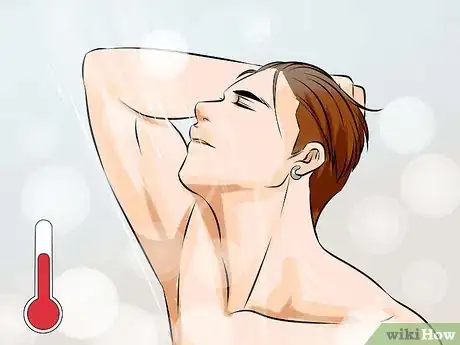
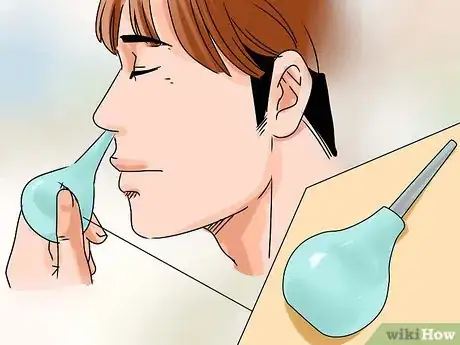
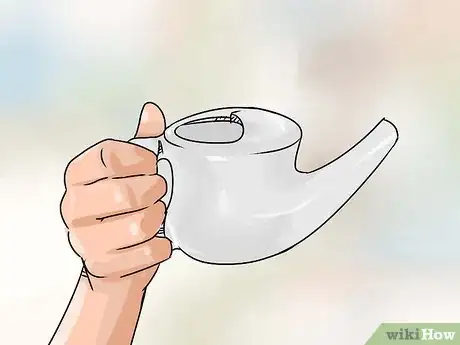
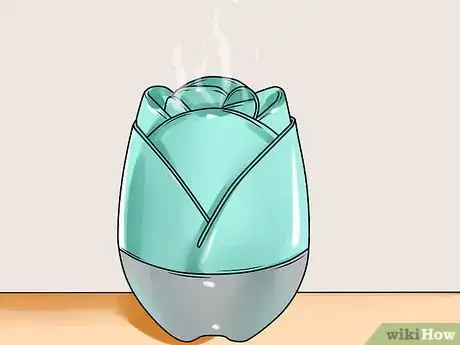
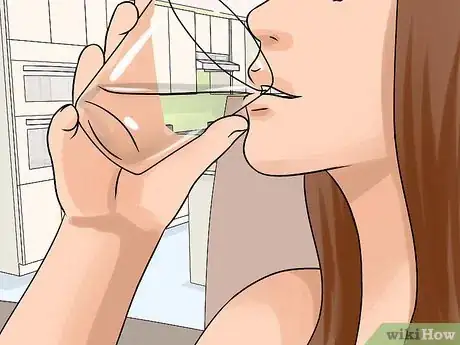
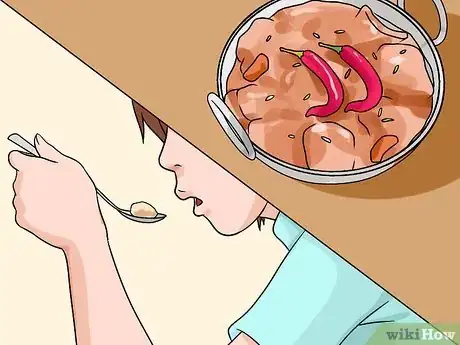

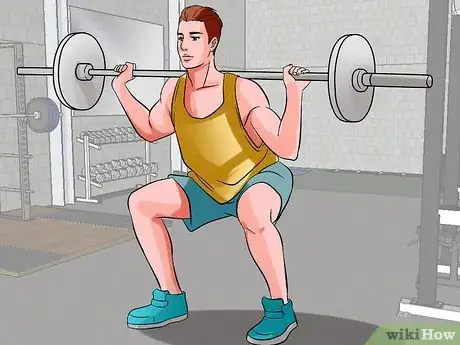
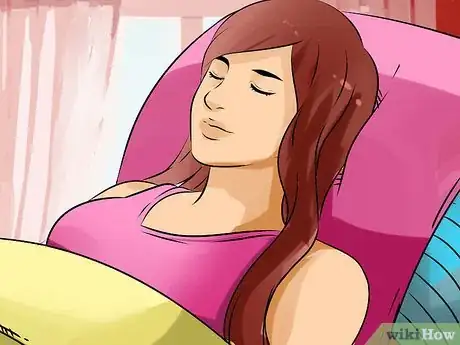

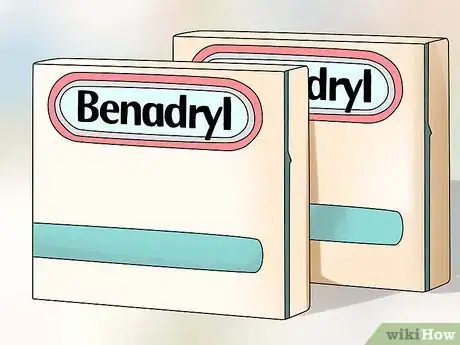
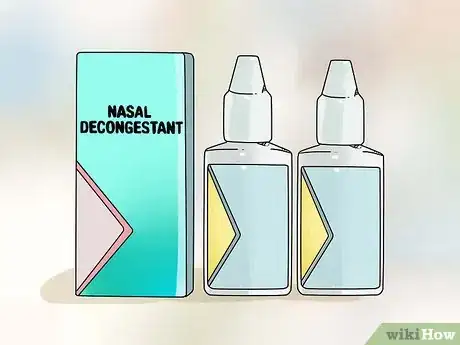

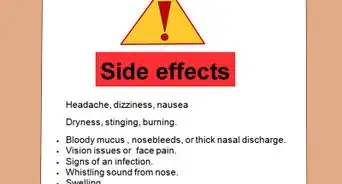



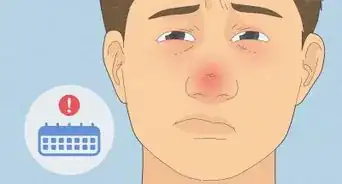
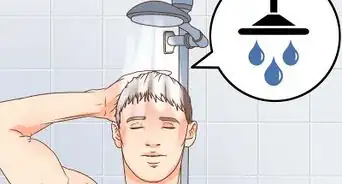


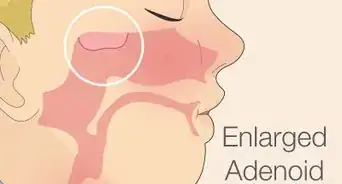












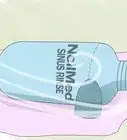






































Medical Disclaimer
The content of this article is not intended to be a substitute for professional medical advice, examination, diagnosis, or treatment. You should always contact your doctor or other qualified healthcare professional before starting, changing, or stopping any kind of health treatment.
Read More...